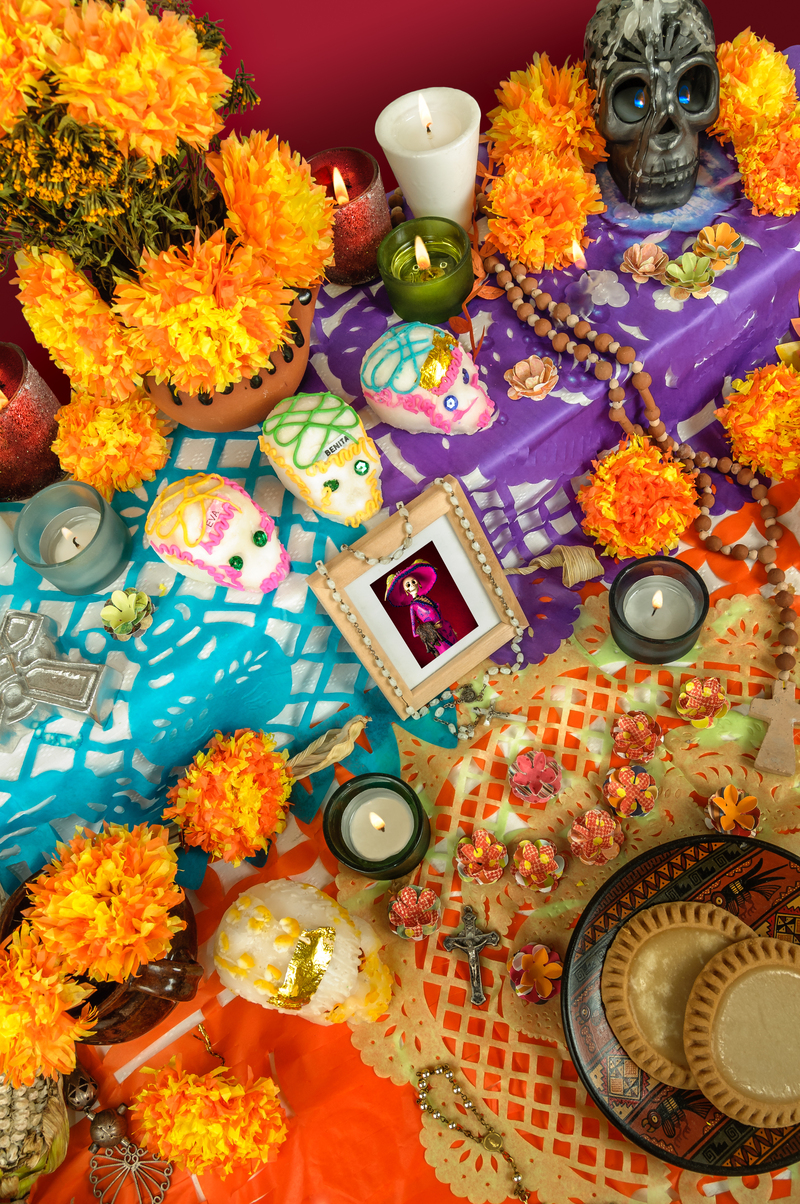Understanding the Rich Symbolism in Peony Flower Hues
Posted on 17/08/2025
Understanding the Rich Symbolism in Peony Flower Hues
The peony is more than just a stunning flowering plant admired for its captivating blooms. With a legacy that spans centuries and cultures, the peony flower holds deep symbolic meaning, often varying depending on its hue. Exploring the symbolism behind the colors of peony flowers enriches our appreciation for these timeless beauties and helps us make meaningful choices--whether for a gift, a garden, or a special occasion. In this in-depth article, we unravel the historical, cultural, and emotional significance of various peony flower hues and show you how to select the perfect peony for any message or intention.

The Historical and Cultural Importance of Peony Flower Colors
Throughout history, the colors of peonies have been as relevant as their enchanting scent and lush foliage. Originating from Asia, particularly in China and Japan, peonies have been cultivated for over 2,000 years and are woven into the fabric of art, medicine, and folklore. In addition, peonies serve as the official flower of China and the state flower of Indiana in the United States. Their varied forms and shades have made them a cornerstone in wedding bouquets, paintings, and poetry. But what do these colors truly signify?
An Overview of Popular Peony Colors and Their Meanings
- White Peonies: Symbolize purity, innocence, and new beginnings.
- Pink Peonies: Evoke romance, love, and gentle affection.
- Red Peonies: Represent passion, respect, and honor.
- Yellow and Gold Peonies: Stand for prosperity, happiness, and good fortune.
- Purple Peonies: Convey royalty, uniqueness, and luxury.
- Coral Peonies: Express energy, freshness, and innovative spirit.
White Peonies: Emblems of Purity & Healing
White peonies hold an enduring association with innocence and new beginnings. Often chosen for weddings, baptisms, and christenings, their delicate petals symbolize a pure heart and a fresh start. In Chinese symbolism, white peonies may also signify mourning and remembrance, making them fitting for sympathy arrangements and tributes.
In both Eastern and Western traditions, these blooms are also a symbol of healing. The peony root has played a role in ancient medicinal practices, believed to aid ailments and foster well-being. Thus, gifting a white peony bouquet can be an act of wishing peace and recovery upon the recipient.
Pink Peonies: The Quintessence of Romance
No other color embodies the gentle power of affection quite like the pink peony. A wedding staple, pink-hued peonies transmit admiration, heartfelt emotion, and loyalty. The diverse shades--ranging from pale blush to vibrant fuchsia--allow for nuanced expression:
- Blush Pink Peonies are timeless choices for wedding bouquets and anniversary flowers, representing young love, devotion, and enduring happiness.
- Brighter Pinks suggest playful flirtation and fun, adding a lively spirit to any arrangement.
In Victorian flower language, pink peonies also spoke of bashfulness and good fortune, making them a popular gift for suitors or as tokens of friendship.
Red Peonies: The Mark of Passion and Respect
As one of the most dramatic peony flower hues, the red peony conveys messages of deep respect, valor, and consuming passion. In Chinese culture, where the peony is often dubbed the "King of Flowers," the red variety holds a special place in representing wealth, prosperity, and honor. Red peonies might be displayed in homes or businesses to attract good luck and celebrate major milestones or holidays, including the Lunar New Year.
On a personal note, gifting red peonies is akin to sending roses--they symbolize romance, loyalty, and intense emotions. However, their lush fullness and historical pedigree offer a more classic and stately alternative to more common floral choices.
Yellow and Gold Peonies: Symbols of Prosperity and Joy
Yellow peonies, though less common, offer a bright and cheerful energy to gardens and floral arrangements. Their sunny hues denote joy, optimism, and positive energy. In Asian traditions, yellow and golden peonies are regarded as emblems of wealth, prosperity, and abundance.
These peonies make thoughtful gifts for birthdays, housewarmings, or to wish someone success in a new venture.
- Golden Peonies specifically highlight abundance and success. They are particularly prized during celebrations that mark new beginnings, like the New Year or opening ceremonies.
Purple Peonies: The Flower of Luxury and Mystery
Purple has long stood for royalty and sophistication, and purple peonies are no exception. With their lush foliage and striking colorations--ranging from lavender to deep magenta--they symbolize luxury, nobility, and a touch of mystery. In Western symbolism, purple flowers align with creativity and spiritual fulfillment, making them a favorite among artists, designers, and those who appreciate the unconventional.
Because of their regal connotations, purple peonies are often used in arrangements intended for high honors or significant milestones. They can be an inspired choice for graduations, retirements, or as a congratulatory gesture for major achievements.
Coral Peonies: Vibrancy and Innovation
Relatively new on the horticultural scene, coral peonies radiate energy. Their striking blend of pink, peach, and tangerine hues captures freshness, creativity, and excitement. These flowers are ideal for settings or occasions where you wish to acknowledge a new adventure, encourage originality, or add a contemporary twist to an old tradition.
- Coral peonies are especially popular for spring events, milestone birthdays, or as a unique statement piece in modern floral design.
Peony Flower Colors in Cultural and Artistic Contexts
Beyond personal messages, the symbolism of different colored peonies has deep roots in art and literature. In China, peonies symbolize feminine beauty, honor, and wealth, often making appearances in imperial robes, paintings, and poems. In Victorian England, the color of peonies indicated specific virtues or social intentions, part of the now-famous language of flowers.
- Red and gold peonies graced imperial gardens and palaces, symbolizing the power and limitless fortune of those who cultivated them.
- White and pale pink peonies are frequently depicted in wedding scenes, representing serenity and the start of new chapters.
Peonies in art have been painted by masters like Monet and featured in Japanese woodblock prints, attesting to their transcendent beauty and cultural resonance.
Peony Hues in Modern Floral Arrangements
Today, understanding the meaning of peony flower colors can enhance gift-giving, event planning, and even self-expression through gardening. Designers craft bespoke bouquets based on the nuanced symbolism of peony hues, creating personalized statements for birthdays, anniversaries, graduations, or expressions of sympathy.
- A mixed bouquet of peonies is often seen as a wish for all the virtues--love, luck, honor, and prosperity.
- Monochromatic arrangements highlight a single intention, from renewal (white peonies) to deep romance (red and pink peonies).
Choosing the Right Peony Hue
Selecting the right peony color symbolism in your gifting or floral design can elevate the meaning behind your gesture. Here's a quick guide:
- For Weddings: Choose soft whites and delicate pinks to celebrate love, purity, and new beginnings.
- For Anniversaries or Romantic Events: Go with vibrant reds or bolder pinks to convey passion and enduring affection.
- To Celebrate Success or Wish Well: Yellow or gold peonies symbolize prosperity, while purple peonies denote honor and personal achievement.
- To Encourage a Friend: Coral peonies spark creativity and enthusiasm.
- To Express Sympathy: White peonies offer peace, remembrance, and sincere condolences.
Think about occasion, relationship, and intention when choosing your peony arrangement. Such mindfulness not only pleases the eye but also touches the heart.
Cultivating Peonies for Symbolic Gardens
If you're planning to grow your own peonies, why not curate a symbolic garden? Mixing peonies of different colors allows you to foster an environment that reflects various aspirations--love, luck, honor, joy, and renewal. Here are some expert tips:
- Choose peony varieties that bloom in staggered periods for a longer show of color.
- Group peonies by color for intentional design, e.g., lining a path with white peonies for a serene entrance.
- Mix hues near entertainment or living spaces for a rich tapestry of meaning and beauty.

Frequently Asked Questions About Peony Flower Symbolism
-
Do peony colors mean the same thing everywhere?
Not necessarily. While many peony color meanings are shared across cultures, some nuances differ. For instance, white peonies often symbolize purity in the West, but can also represent mourning in Chinese tradition. -
Are peony color meanings recognized in modern times?
Yes! Florists, artists, and event planners still use color symbolism when designing arrangements--especially for weddings and celebrations. -
Can I mix peony colors in a bouquet?
Absolutely. Mixed color bouquets can offer layered meanings, representing complex feelings or the wish for multiple blessings.
Conclusion: The Enduring Allure of Peony Flower Hues
The symbolism behind peony flower colors transcends mere decoration. These exquisite blooms tell stories--of love, honor, purity, prosperity, and renewal. Whether gracing royal gardens, wedding aisles, or the tables of modern homes, peonies in all their hues continue to captivate and convey heartfelt messages. The next time you encounter these luscious, layered petals, remember their storied meanings--and let that knowledge inspire your choices, celebrations, and personal expressions.
Explore the world of peonies and use their rich symbolism to add a deeper layer of meaning to any occasion. Let every hue speak volumes.
Latest Posts
Ideas for Reviving Your Cut Flower Bouquet
Engage With These 7 Amazing Facts About Tulips and Their Legacy
Understanding the Rich Symbolism in Peony Flower Hues
Embrace the Significance of Your Birth Flower and Yourself
Go Beyond the Basics with 8 Astonishing and Lesser-Known Sunflower Facts





